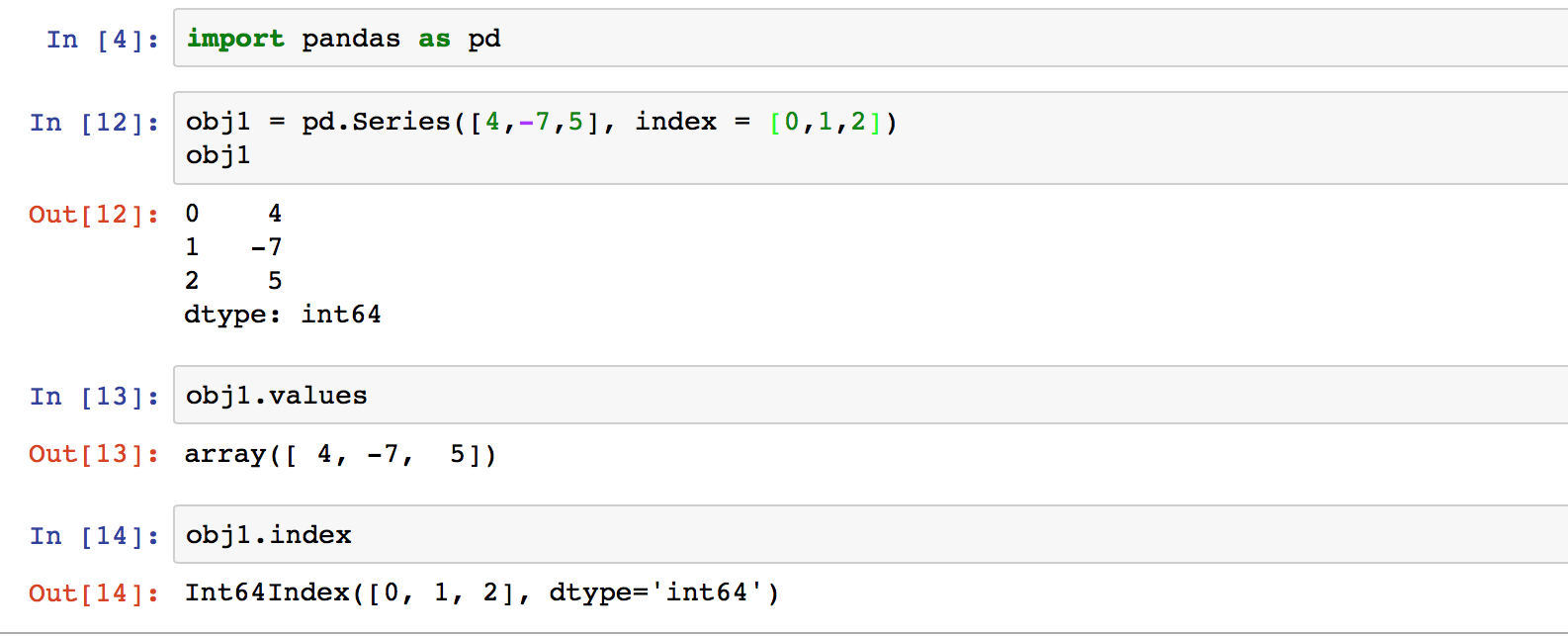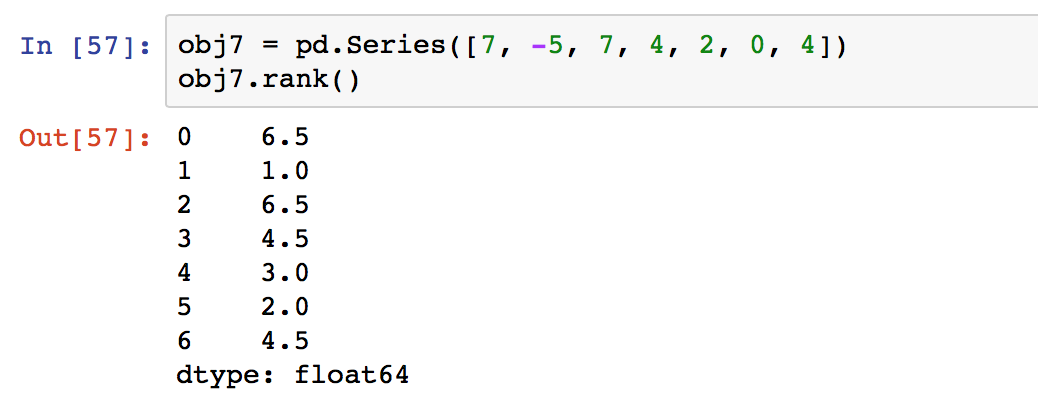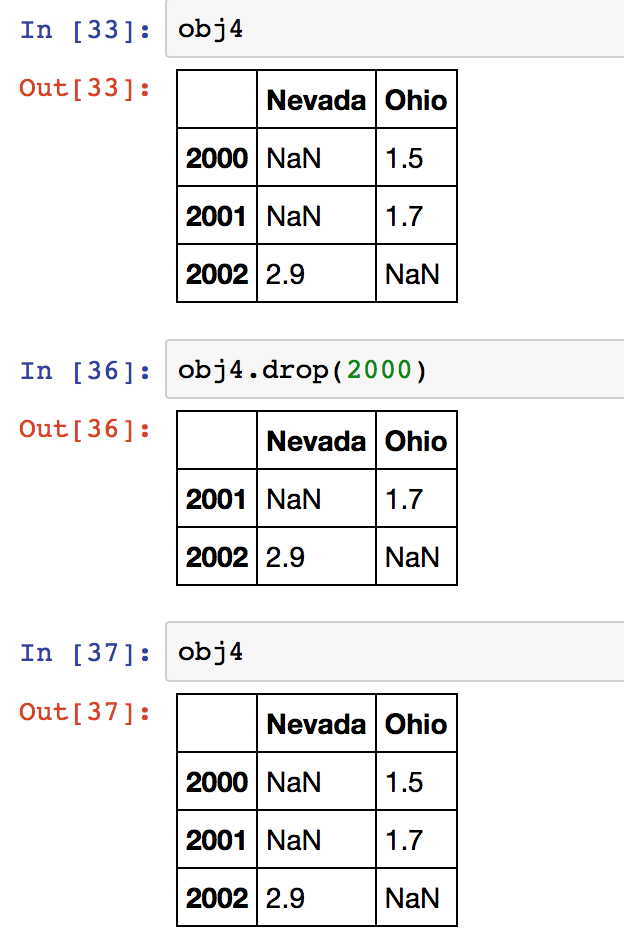python數據處理:pandas基礎
本文資料來源:
Python for Data Anylysis: Chapter 5
10 mintues to pandas: http://pandas.pydata.org/pandas-docs/stable/10min.html#min
1. Pandas簡介
經過數年的發展,pandas已經成為python處理數據中最常被使用的package。以下是開發pandas最開始的目的,也是現在pandas最常用的功能
a: Data structures with labeled axes supporting automatic or explicit data alignment(數據調整). This prevents common errors resulting from misaligned data and working with differently-indexed data coming from differernt sources.
b: Integrated time series functionality
c: The same data structures handle both time series data and non-time series data.
d: Arithmetic operations and reductions (like summing across an axis) would pass on the metadata(axis labels,元數據)。
e: Flexible handling of missing data
f: Merge and other relational operations found in popular database databases(SQL-based, for example)
有一篇文章“Don‘t use Hadoop when your data isn‘t that big ”指出:只有在超過5TB數據量的規模下,Hadoop才是一個合理的技術選擇。所以一般處理<5TB的數據量的時候,python pandas已經足夠可以應付。
2. pandas data structure
2.1 Series
Series是一個一維的array-like對象,由兩部分組成:1. 任意numpy數據類型的array 2. 數據標簽,稱之為index。
因此一個series有兩個主要參數:values和index
示例為創建一個series,獲得其value和index的過程

通過傳遞一個能夠被轉換成類似序列結構的字典對象來創建一個Series:

字典的key作為index表示。在Series中還可以加入index參數來規定index的順序,其value會自動根據key來匹配數值。
Series有一個重要的特征就是:在進行數學運算時,它的對齊特征(Data alignment features)可以自動調整不同index的數據,以便同一種數據進行數學運算。
而且Series對象本身和index參數都有一個參量為name,比如obj.name=‘population‘, obj.index.name = ‘state‘
2.2 DataFrame
DataFrame可以用來表達圖表類型、數據庫關系類型的數據,它包含數個順序排列的columns,每個col中的數據類型一致,但是col彼此間數據類型可以不一致。
DataFrame有兩個index:row和column
create dataframe的方法:通過同等長度的list或者array或者tuples的dictionary,通過nested dict of dicts, 通過dicts of seires等等,詳見書本table5.1

提取列:通過obj3[‘state‘]或者obj3.year獲取列的信息,返回類型為Series,與DataFrame有同樣的index
提取row:用ix函數以及row的位置信息或者名字

常用函數:
del:刪除列 del obj[‘year‘]
常見參數:index和 columns都有name參數,value
2.3 index ojbect和reindexing
pandas index的作用:for holding the axis labels and other metadata(like the axis name or names)
Index對象是不變的,意思就是無法被用戶修改,所以下列code無法通過,這個對應了我們簡介中所說的a這一條

reindex()方法可以對指定軸上的索引(index)進行改變/增加/刪除操作,這將返回原始數據的一個拷貝

reindex()中參數介紹:
index:新的index,代替原來的,原來的index不會copy。pandas的處理一般都會自動copy原始value,這點與ndarry不同
method:有ffill和bfill
fill_value:填補NAN value
copy等等
3.查看數據
3.1 sorting:返回一個排序好的object
a:按照軸(行列)進行排序
sort_Index()
參數介紹:默認按照row排序,axis=1即按照列
默認升序,降序ascedning=False
b:按照value排序
order():缺值排在末尾
3.2 ranking
rank():按照值出現的順序賦值,返回一個新的obj。有同樣的值的時候,默認返回排序的mean

3.3 unique
is_unique: tell you whether its values are unique or not,返回true or false
unique:返回不重復的值,返回一個array
3.4 value_count:計算序列中各個值出現的次數

3.5 describe() 對於數據快速統計匯總
4.選擇數據
4.1 drop
drop行:
pandas的處理一般都會自動copy原始value,這點與ndarry不同,舉例如下,drop一行之後調用原始對象,發現沒有改變

drop列:obj4.drop(‘Nevada‘,axis=1)
在python很多函數的參數中,默認都是考慮row的,所以有axis(軸)這個參數
axis=1 為垂直的,即列
axis=0 為水平的,即行
4.2 選擇selection,切片slicing,索引index
a: 選擇一個單獨的列,這將會返回一個Series,df[‘A‘] 和 df.A一個意思
b: 通過[]進行選擇,這將會對行進行切片
c: 通過標簽選擇:endpoint is inclusive 即obj[‘b‘:‘c‘]包含‘c‘行
d: 選擇row和columns的子集:ix
f: 通過標簽進行索引: loc

e: 通過位置進行索引: iloc
` 
4.3 使用isin()方法來過濾:
用於過濾數據

5.缺失值處理
5.1 missing value
pandas用NaN(floating point value)來表示missing data
5.2 去掉包含缺失值的行或者列
dropna
參數說明:how=‘all‘ only drop row that all NA
axis=1, drop column
thresh=3, 只保留還有3個obseration的行
5.3 對缺失值進行填充
fillna
5.4 isnull:返回like-type對象,包含boolean values指明value是否為缺失值
notnull: isnull的反作用
6.計算函數
a:對於不同index的兩個df對象相加“+”,其結果與數據庫中union類似,缺失值為NaN
b:具體的加減用add()或者sub(),缺失值可以用fill_value代替
c:sum,count,min,max等等,包含一些method
d:correlation and covariance
.corr()
.cov()
7.合並 reshape
8.分組
對於”group by”操作,我們通常是指以下一個或多個操作步驟:
(Splitting)按照一些規則將數據分為不同的組;
(Applying)對於每組數據分別執行一個函數;
(Combining)將結果組合到一個數據結構中;
註:本文並不全面,僅僅總結了目前我所需要的部分。
python數據處理:pandas基礎
